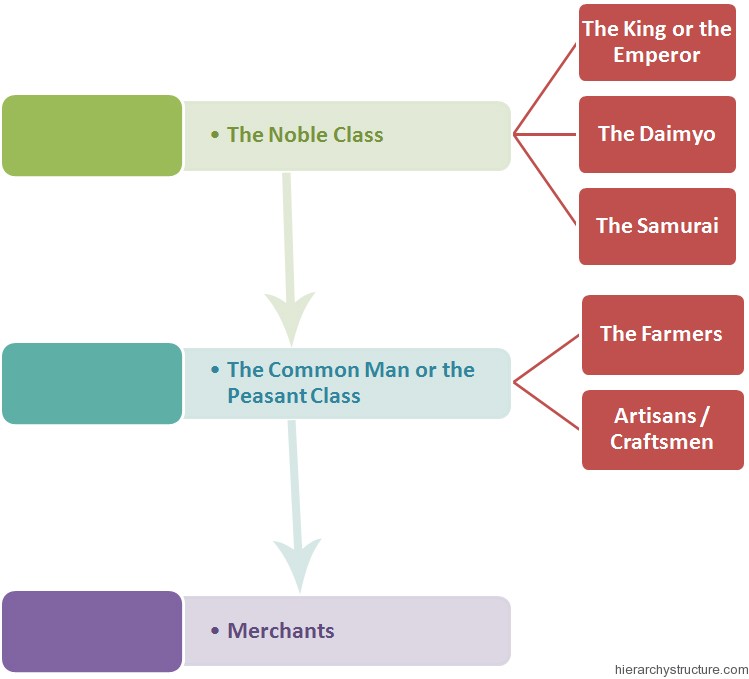Ancient Japan social hierarchy demonstrates the classification of Japanese people on the basis of certain rules and conditions that were followed by Japanese society in ancient times. These social classes were categorized based on power as well as prestige. Ancient Japanese social hierarchy was majorly segregated into two classes the upper Noble Class and the lower Peasant Class. These classes were further sub categorized and thus forming a hierarchy. Following are the major classes in the social hierarchy of Ancient Japan:

Upper Class – The Noble Class
- The King or the Emperor:
- The Daimyo
- The Samurai
Lower Class – The Common Man or the Peasant Class
- The Farmers:
- Artisans / Craftsmen
Merchants
The detailed description of this ancient Japanese social hierarchy is summarized as below in a manner starting with the top most social class and ending with the lowest one.
Upper Class – The Noble Class: The Noble Class was the highest class in ancient Japanese social hierarchy. Well this was also far more Superior Class than rest of the people in Japan. This class was further categorized in three more parts in the ancient Japanese social hierarchy which are described as below:
- The King or the Emperor: Well undoubtedly this was the top most rank in the hierarchy. The Emperor possessed the supreme power among all the classes. The order of an Emperor was considered the final decision and no person was allowed to deceive that order. They ruled the kingdom and handled the administration. The Emperor was equivalent to the God for the countrymen.
- The Daimyo: The second in this class was the Daimyo. These people were also referred as the warlords. They mostly got the status and position of a Shogun and possessed the entire Ancient Japanese military as well as the economical power of the kingdom. The country’s security was under their leadership and responsibility.
- The Samurai: The Samurai were the brave soldiers that constituted the armies led by Daimyos. They protected the entire Nation with their bravery and heroism.
Lower Class – The Common Man or the Peasant Class: The Common Man was the lowest class in this hierarchy and they possessed almost very few rights. They performed day to day working which a common man does to earn a livelihood. This class was further divided into many sub-categories. A brief description is as follow:
- The Farmers: The Farmers were the topmost Class in the common man class in the ancient Japanese social hierarchy. This further incorporates two sub categories as the Farmers having their own land and the Farmers not having their own land. Former were superior to the latter.
- Artisans / Craftsmen: This was the second class in the common man class. Their work was with metal and wood and some of them got famous as ardent Samurai’s Sword maker.
Merchants: Merchants was the lowest class in the common man class in the hierarchy because it was thought that their earning is totally dependent on other people’s work but later on the trend did change.
